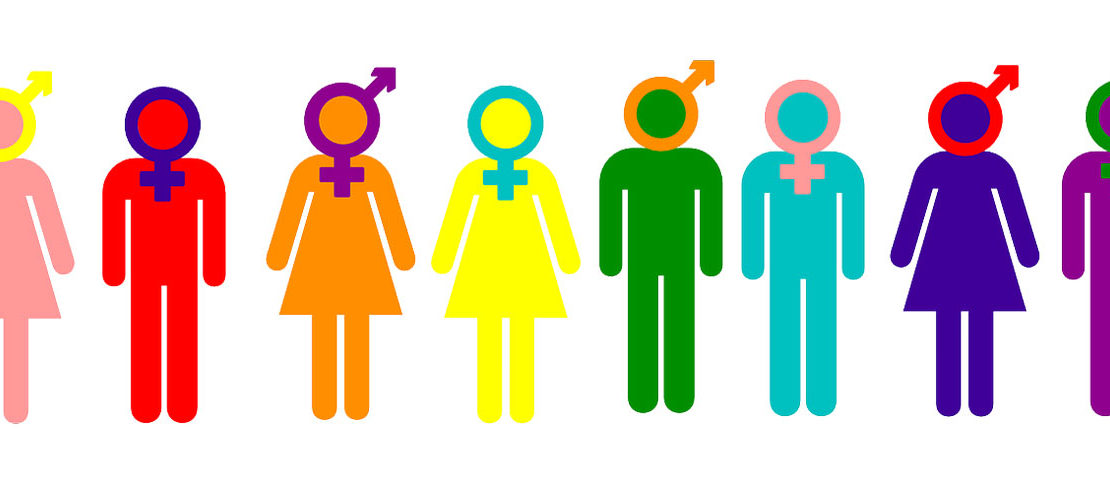- May 17, 2019
- Posted by: Shivani Agarwal
- Category: EDUCATION, EDUCATION IN DEVELOPING NATIONS, Featured, GENDER INEQUALITY, Latest Work

The classrooms of today build the future of tomorrow. Schools are seen as a miniature of society, as we prepare students in classes today, for challenges of tomorrow, we need to think beyond contemporary settings. Therefore, the structures of the system, content and delivery of the lessons in the educational setups need to be ahead of their current times. The curriculum designers, policymakers and educationists need to assess and foresee the skills and learning that would be required in the times to come. The topics being taught and discussed need to reflect the historical, cultural and social underpinnings along with the evolution and changes in the world that is inevitable. It would ensure that students not only value the individual cultures but also participate equally in being global citizens.
One such topic where from an early age, the students need to be sensitised is gender equality. Undoubtedly, we have come a far way from where we began, but there is still a long way to go in building a gender equal society. This article emphasises on the need to embrace gender equality beyond the binary division of male and female. It traces the journey of women empowerment so far, and the further need to adopt gender neutrality. The particular focus is on the educational set-ups that can accelerate the movement in the right direction.
The Quest for Gender Empowerment
It took us centuries to make this world reach this stage. The feminist wave began in the nineteenth and twentieth century in the western world, focussing primarily on giving voting rights to women. Since then, the world has progressively been moving towards more gender equal society. As Indians, we have been fortunate enough to have gender parity enshrined in our constitution right since our freedom. It is an objective stated in our preamble and is the whetstone for any law in the country. It did not come the easy way; the struggle began in the latter half of the nineteenth century when voices against the evil social practices like Sati, child marriage were raised. In the twentieth century, women started to be seen as an active and valuable participant in political movements. In the post-independence phase, the Constitution recognised the equal status of women concerning their social, economic and political identity. Since then, there have been systemic changes to bring about gender equality in education, administration, laws, economy, politics, and social customs.
There are many instances which have helped us to pave the road forward. Vishaka vs the State of Rajasthan enabled providing safer spaces for women at the workplace. Mary Roy vs the State of Kerala enabled Syrian Christian women to have inheritance rights just like males. Recently, the Supreme Court allowed the entry of women in the temple of Sabarimala. Likewise, there have been progressive changes not only in the systems but also in the mentalities of the people at large.
The conversations regarding gender rights and individual choices have begun, and that is a step in the right direction. The content on media, in the textbooks, popular literature is getting gender sensitive. There have been attempts by CBSE to filter the content in the academic curriculum concerning gender issues by editing pictures and text. The pedagogies and activities adopted in the class are attempted to be carefully looked through the lens of gender equality.
Beyond the Binary Division
However, we need to go beyond the women empowerment to ensure that all the genders are equally accepted. Article 377 criminalized homosexuality as a practice. The partial scrapping of Article 377 from Indian Penal Code in the historic judgement in Navtej Singh Johar& Ors vs Union of India, is a step in the right direction as a nation. Such legal updates can best be implemented when changes are coming from societal institutions and social structures.
If we hope to see a world beyond the binary division of gender, we need to reconsider our classroom settings of today carefully. We cannot afford to take centuries before we grow into an equitable world where there is recognition, respect and mutual co-existence of all genders and sexualities. We need to move from equal gender space to gender-neutral spaces. The classrooms need to get gender neutral to accommodate different genders apart from the binary division of male and female. Gender neutrality will allow us to accelerate the movement towards gender equality.
Beginning From Instances Around Us
The more neutrality we adopt, the more stereotypes we shed and the more open we become towards accepting different genders and sexualities. We all are aware of the incidences where particular students are mocked at for not conforming to the stereotypes associated with being a girl or a boy. A girl interested in riding motorbikes or with short hair is called a ‘tomboy’, and a guy who is emotional or sensitive is called ‘girly’. It is a common sight to see washrooms have only two divisions, male and female; when we know, there does exist a division beyond that. Then, forms we fill usually have only two options for ‘gender’ category, and even if there is a third one, it is named ‘others’. How do we give equal space to someone’s existence when we categorize them as ‘others’. Many such examples point towards our preoccupation with binary divisions. As a responsible society, we need to put serious thought to critically ponder and change our actions, which unknowingly impact other’s lives.
Gender neutrality refers to using language and other social institutions without distinguishing roles/behaviour according to one’s sex or gender. It avoids the biases arising from social rules according to which roles are assigned to different genders. It might be sound too much to ask for a third washroom or challenging to imagine introducing our kids to this concept but so was it difficult to imagine a girl going to school about a century and a half ago. We need to rethink the processes we employ at institutional entry points, in the instructions and our interpersonal communication. The admission of the students and recruitments of the teachers need to look beyond the gender lenses, the language used in the classrooms needs to be sensitive towards all the genders, and our communication beyond classroom need to be accepting towards the diversity that we cannot ignore. Many would reject such introductions at school level terming it bizarre, but if a seamless transition is made, the implementation of laws and assimilation will be more straightforward.
Today, gladly, there is a growing effort for acceptance, recognition and assimilation of the different individualities. We are breaking out from only the two gendered division of society. However, this is just the beginning. With the world getting smaller and technology upgrading at a crazy pace, small efforts can be taken to larger audiences with only a few clicks. From the policymakers to the teachers in the classrooms, everyone will have to consider gender neutrality as an essential dimension in imparting education to build a more gender-inclusive society for tomorrow.

